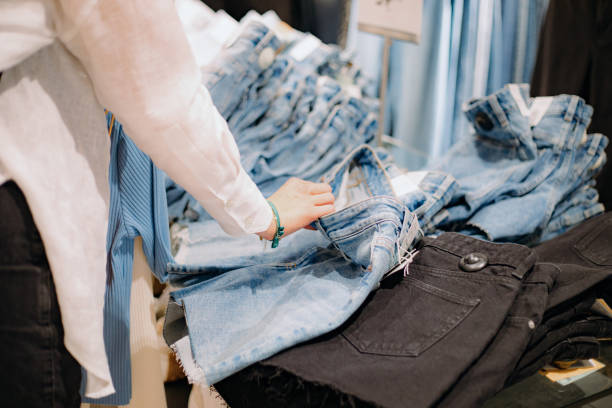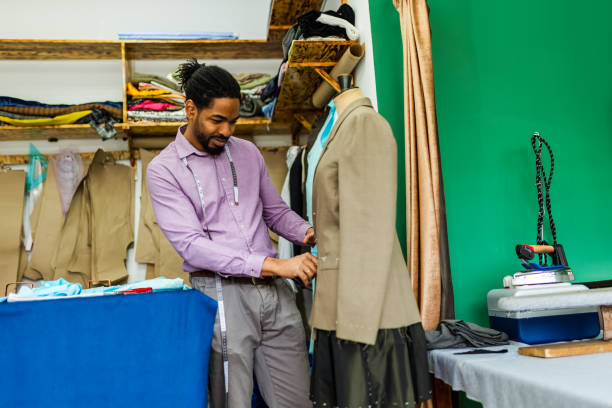The fashion industry, a vibrant and dynamic sector, is not immune to the winds of political change. Political factors such as legislation, trade agreements, and economic stability can profoundly impact the trends and operations within the fashion realm. Fashion brands often find themselves at the mercy of these factors, influencing everything from production to marketing strategies. The interplay between the clothing industry and political forces shapes not only the styles that hit the runway but also the global economic landscape of apparel production and consumption. This article delves into the multifaceted relationship between politics and fashion, exploring how political climates could affect the industry’s future.

The Fabric of Politics: How Governments Impact Fashion
Government policies and political decisions exert a significant influence over the textiles industry. The imposition of tariffs and development of trade policies are capable of altering manufacturing costs and determining market access. Economic factors such as these are pivotal in influencing both local production and international collaborations. Legal factors, including labor laws, can also set standards for working conditions in the industry, which ultimately affects costs and ethical branding.
For instance, a change in government in a leading fashion-manufacturing country could impose stricter environmental regulations on factories, which affects businesses by increasing overheads but potentially improving environmental impacts. This ripple effect can travel far beyond the borders of a single nation, influencing global fashion industry trends and production approaches.
Trade Agreements and Their Sartorial Significance
Trade agreements hold significant sway over the direction of fashion brands. A new trade deal can lower barriers and introduce fashion products to burgeoning markets, while protectionist policies can insulate local clothing industries at the expense of international partnerships. Technologies that make global collaborations easier are also influencing how these trade agreements are utilized by fashion companies.
Numbered List:
- Free Trade Agreements often reduce or remove tariffs, making it more attractive for fashion brands to outsource production or sell internationally.
- Protectionist Policies that impose tariffs on imported goods could benefit domestic producers of fashions but increase prices for consumers and fashion brands relying on foreign textiles.
Fashion on the Frontline: Political Statements and Trends
In recent years, clothing has increasingly become a canvas for political expression. Designers and brands harness fashion to broadcast social and political messages, sometimes in response to specific events, sparking debates that reach far beyond the confines of the fashion industry. Such sartorial statements have the power to galvanize public opinion and incite social change, having become a popular medium for individuals and brands to stake their place on a range of issues, from human rights to environmental factors.
Table: Political Influences on Recent Fashion Trends
| Year | Political Event | Fashion Trend/Statement |
|---|---|---|
| 2020 | Global Health Crisis | Rise in comfortable, home-based clothing |
| 2021 | Climate Awareness Movements | Eco-friendly materials and sustainable brands |
| 2022 | Gender Equality Debates | Gender-neutral and inclusive sizing ranges |
The Ripple Effect of Economic Policies on Fashion
Economic policies shape the overall environment in which fashion brands operate. When a country is experiencing economic growth, consumers have more disposable income for non-essentials, such as the latest fashions. Conversely, during recessions, the demand for luxury goods diminishes, and fashion trends may shift toward more affordable alternatives. These economic factors affect fashion designers, retailers, and consumers alike, influencing everything from pricing strategies to the aesthetics of clothing lines.
The interplay between political and economic stability can have direct implications on currency values, which in turn impact the cost dynamics within the fashion industry. For example, when a country’s currency weakens, its export products become cheaper for foreign buyers but increase the cost of importing raw materials, which could influence the overall profitability for fashion brands.

Ethical Concerns and Political Activism in Fashion
The rise of ethical consumerism has placed political activism at the forefront of the fashion conversation. Modern fashion brands are increasingly expected to demonstrate accountability in their supply chains, ensuring fair labor practices and environmental responsibility. These social factors, along with consumer advocacy, compel brands to navigate not just economic and political waters, but ethical ones as well.
Numbered List:
- Ensuring ethical sourcing of materials to prevent exploitation in the supply chain.
- Adopting sustainable practices to minimize environmental impacts associated with fast fashion.
The Human Rights Thread in the Fashion Tapestry
The intersection of political activism and fashion is nowhere more evident than in the ongoing debates over human rights within the industry. Brands have faced increasing pressure from both governments and consumers to uphold higher standards. This scrutiny could lead to legislative changes, imposing new requirements on fashion brands to ensure that their products are manufactured under fair and safe working conditions.
Political Unrest and Its Influence on Fashion Supply Chains
Political instability in a region can have a dramatic impact on the fashion supply chain. Industry leaders must constantly assess the influences of global political climates to mitigate risks. Disruptions such as strikes, trade embargoes, or even civil turmoil can halt production, delay shipments, and create shortages in the marketplace. Proactive risk management in the form of diversified sourcing and strategic partnerships is key to maintaining stability in volatile times.
Anticipating Political Winds: Adapting to a Changing Political Landscape
Staying ahead of the curve means that fashion brands must not only anticipate but also adapt swiftly to the fluctuating political landscape. Whether it is by reshoring production to respond to new trade policies or embracing technological innovations to improve sustainability, reacting with agility to political factors affecting the industry is imperative. Those who do not may find themselves at a competitive disadvantage.
The Role of Consumer Advocacy in Political Fashion
The influence of consumer advocacy on the political stances of fashion brands cannot be overstated. In an age where consumers wield significant power through social media and other platforms, fashion brands must listen and react to the social conscience of their customer base. This dynamic could affect everything from product lines to marketing campaigns, making consumer advocacy a force as influential as any government policy.

Conclusion
The interconnectedness of politics and fashion highlights the reality that the fashion industry is not an isolated economic entity but a global tapestry woven with threads of political, economic, and social factors. As the industry continues to evolve, it is clear that fashion brands and industry stakeholders must remain vigilant, agile, and responsive to the diverse array of factors influencing their business. The needle of fashion will continue to be threaded through the fabric of political climates, shaping the designs of tomorrow in the context of today’s world.
FAQs:
Q1: How do trade policies directly affect the fashion industry?
A1: Trade policies can influence the fashion industry by modifying the cost of sourcing materials and selling products globally. Tariffs can increase the price of imported textiles, which affects input costs for clothing manufacturers. Conversely, free trade agreements can lower costs and expand market access, providing fashion brands with more options for production and distribution.
Q2: What is the significance of political statements in fashion?
A2: Political statements in fashion have the power to communicate messages to a wide audience, stirring conversation and potentially influencing public sentiment. Such statements can strengthen brand identity and align fashion brands with particular causes or movements, which can be crucial in building customer loyalty among like-minded consumers.
Q3: How do economic policies influence fashion trends?
A3: Economic policies that foster growth can lead to expanded consumer spending on fashion, prompting the emergence of new styles and trends. A strong economy can support higher-priced luxury fashion, whereas economic downturns often result in a shift toward more cost-effective and durable clothing options.
Q4: Why is it important for fashion brands to consider ethical concerns?
A4: Ethical concerns such as sustainability and labor rights are increasingly important to today’s informed consumer. Brands that neglect these aspects risk reputational damage and decreased sales. Ethical considerations are also essential to creating a more socially responsible and environmentally sustainable fashion industry.
Q5: Can political unrest impact the global fashion supply chain?
A5: Absolutely. Political unrest can disrupt manufacturing, delay deliveries, and cause material shortages, affecting everything from cost to consumer availability. Brands may need to seek new suppliers or production sites to continue operations smoothly, underscoring the importance of having flexible and resilient supply chain strategies.
